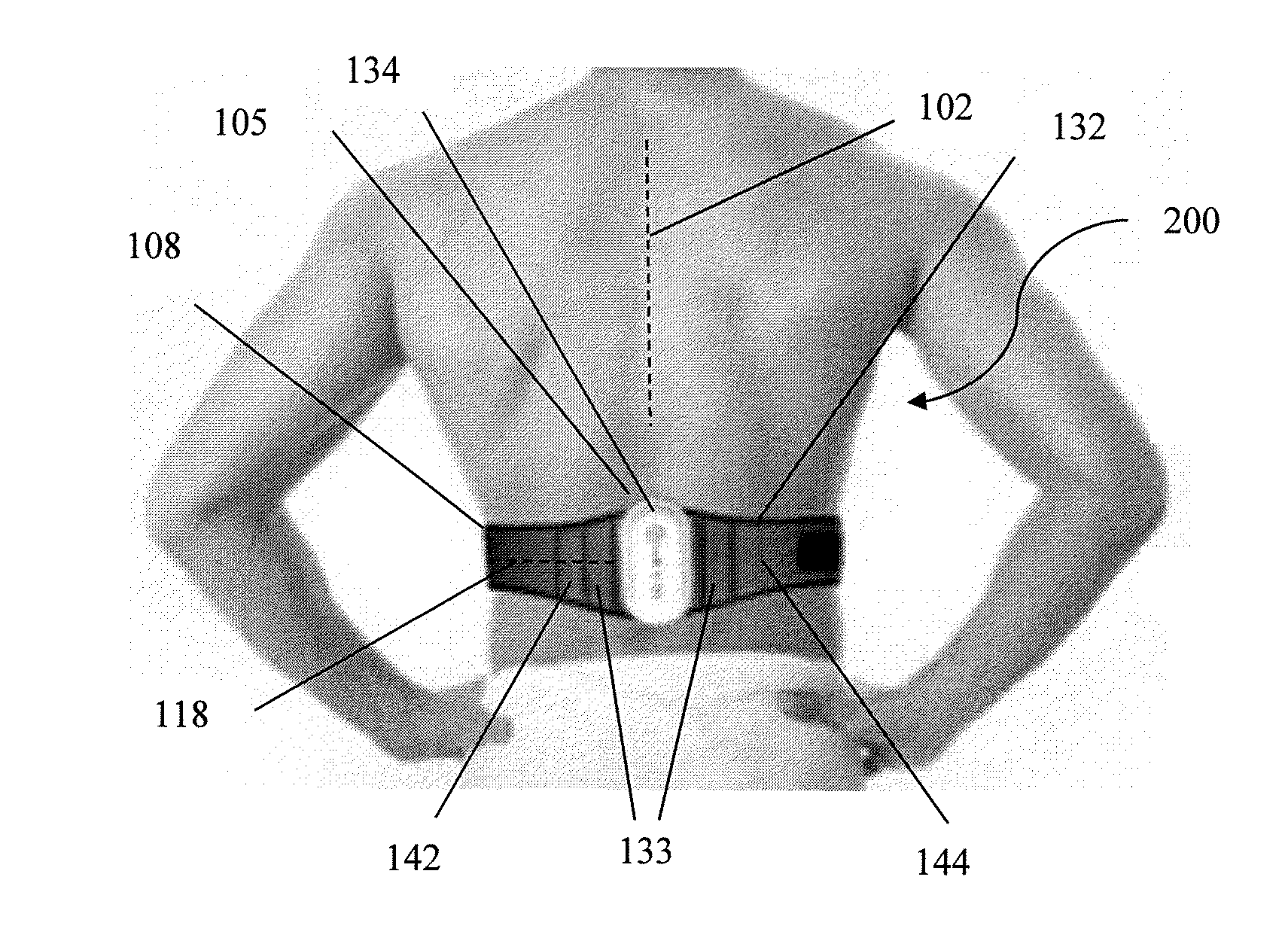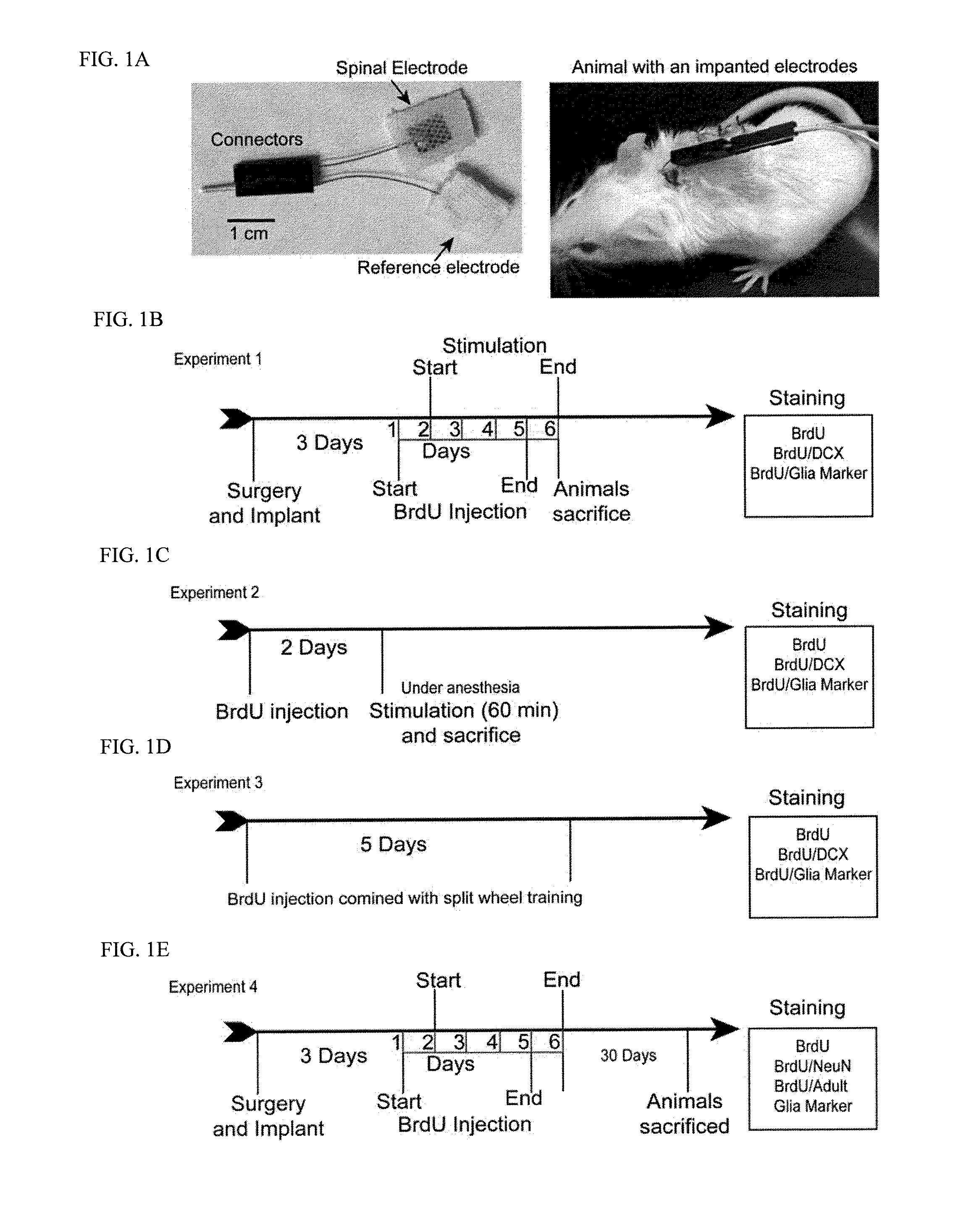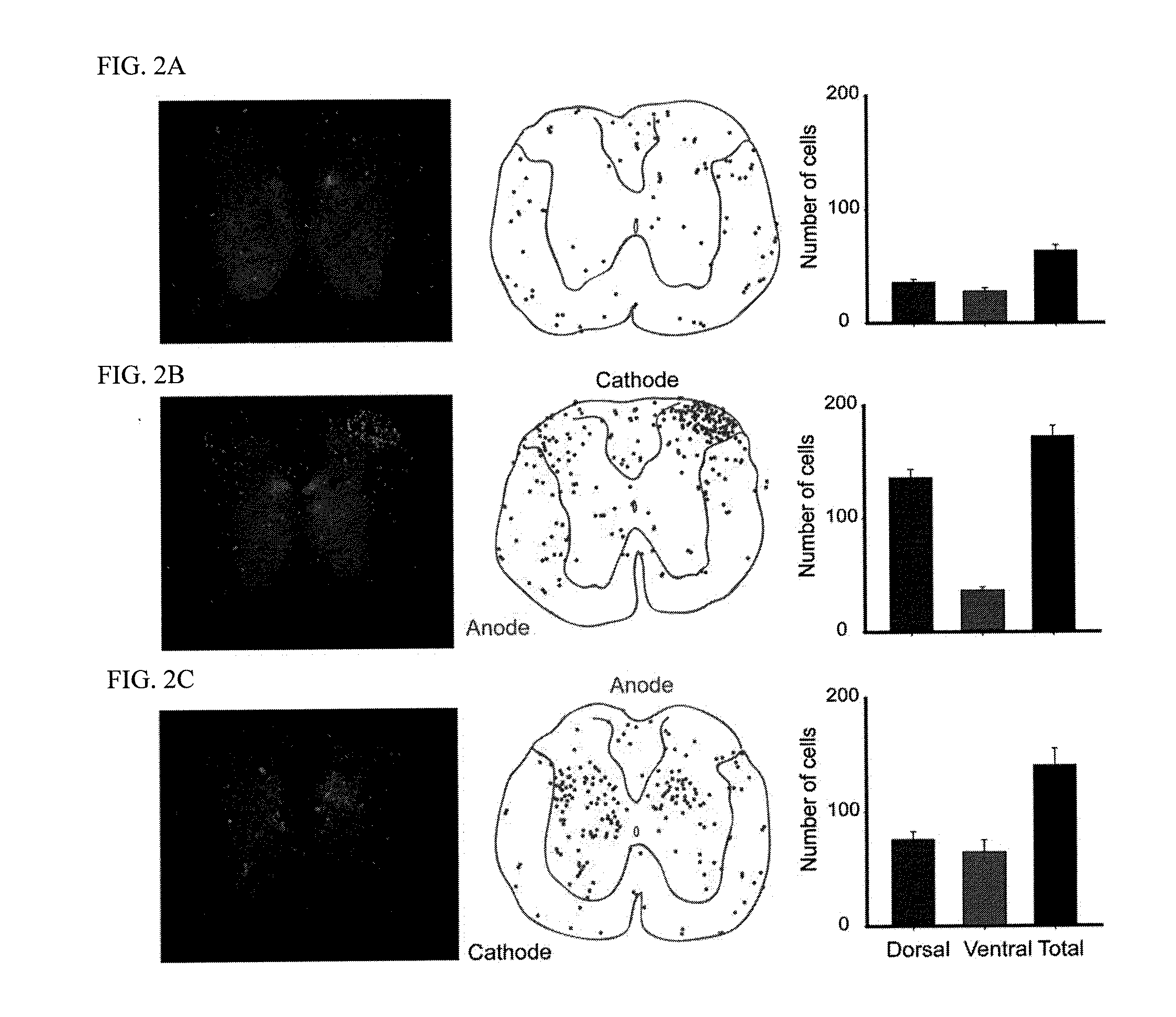Methods and systems for treatment of spinal disorders using trans-spinal direct current stimulation
a technology of direct current stimulation and spinal cord, applied in the field of spinal disorders using transspinal direct current stimulation, can solve the problems of no effective therapeutic intervention, motor, autonomic and/or sensory impairment, etc., and achieve the effect of promoting neuronal cell differentiation and increasing the number of proliferating cells
- Summary
- Abstract
- Description
- Claims
- Application Information
AI Technical Summary
Benefits of technology
Problems solved by technology
Method used
Image
Examples
example
Surgery and Electrode Implantation
[0142]Mice were deeply anesthetized with ketamine / xylazene (90 / 10 mg / kg, i.p.). Incisions were made at skin covering the dorso-lumbar spinal column, and the skin covering the cervical region. The tsDCS electrode was sutured fabric side down to the fascia of the spine to cover the area from the T13 to the L6 vertebral level. The reference electrode was placed fabric side up toward the lateral abdominal skin.
[0143]The spinal DCS electrodes consisted of a small stainless-steel plate (1.5 mm width; 3 mm length; 50 μm thick) that was sandwiched between silicone rubber (178 μm thick) and soft cotton-wick fabric (0.5 mm thick). The three layers were bonded together using silicone adhesive and left overnight to dry before use. The final DCS electrode was 10 mm wide and 15 mm long. Current strength used in all experiments was 0.8 mA. BrdU was injected at a dose of 250 mg / kg i.p.
[0144]Cathodal tsDCS refers to stimulation with the cathode located at the dorsal...
PUM
 Login to View More
Login to View More Abstract
Description
Claims
Application Information
 Login to View More
Login to View More - R&D
- Intellectual Property
- Life Sciences
- Materials
- Tech Scout
- Unparalleled Data Quality
- Higher Quality Content
- 60% Fewer Hallucinations
Browse by: Latest US Patents, China's latest patents, Technical Efficacy Thesaurus, Application Domain, Technology Topic, Popular Technical Reports.
© 2025 PatSnap. All rights reserved.Legal|Privacy policy|Modern Slavery Act Transparency Statement|Sitemap|About US| Contact US: help@patsnap.com



